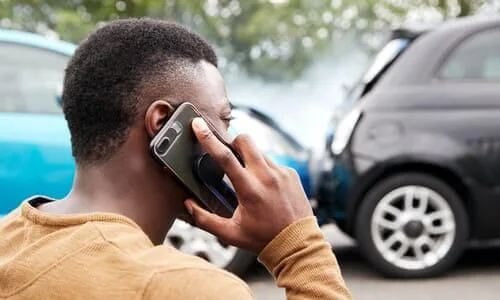Book a Consultation
Find out why so many clients appreciate the amount of work we put into their case.
"*" indicates required fields
Call 24/7

Once everyone who was in the accident gets their bearings, there are going to be either one or two questions on just about everyone’s mind.
“Who was responsible for the mess?”
“What do I do now?”
And, if we can add one more question by extension, as this usually follows the previous ones: who has to pay for it all?
Yes, Utah is a no-fault state. What this means is when a car accident happens in Utah, parties involved must seek compensation for injuries from their respective insurance providers under what is known as Personal Injury Protection (PIP).
This system is called “no-fault” because the rule holds true regardless of who caused the accident.
Utah’s no-fault insurance system is limited by thresholds. While liability insurance exists and is required in Utah, a driver’s injuries must pass certain thresholds for them to have the option to file a liability lawsuit against another party.
A no-fault state requires car accident victims to file claims with their insurance providers when they are injured before pursuing claims elsewhere.
By contrast, an at-fault state requires whoever was responsible for any injuries to cover the expenses of anyone injured. How much and whether or not an at-fault party pays depends on whether the state follows comparative or contributory negligence.
States that use an at-fault system are also called “tort” states.
Only eighteen out of fifty states follow some sort of no-fault system: Arkansas, Delaware, Florida, Hawaii, Kansas, Kentucky, Marylands, Massachusetts, Michigan, Minnesota, New Jersey, New York, North Dakota, Oregon, Pennsylvania, Texas, Utah, and Washington State.
Of these states, Kentucky, New Jersey, and Pennsylvania are optional no-fault states. This means drivers in these states are allowed to opt into being held to no-fault rules.
Because each person on the road is responsible for their own compensation in a no-fault system, state law requires all drivers to have a PIP insurance policy.
PIP is a kind of insurance policy that covers the medical expenses of policyholders and anyone else involved in a car accident. A driver’s insurance policy extends its protection to accident victims even if they have no insurance themselves.
There is a limit on PIP specifying it does not cover property damage. It exclusively compensates a person for medical expenses and usually does not account for other economic and non-economic damages.
Unfortunately, this means PIP cannot compensate a person for pain and suffering.
PIP insurance requirements and coverage vary across the eighteen states that utilize the system. For example, Utah has a $3,000 policy requirement, while Florida requires $10,000.
Utah’s $3,000 PIP requirement is the minimum amount of coverage drivers are required to have. This is also the threshold medical costs need to surpass in order for an accident victim to file a liability insurance claim from an at-fault party.
Unlike PIP, liability insurance is affected by the responsibility of each party in the accident. In Utah, modified comparable liability is applied, where each party’s percentage of fault is reduced from the total value of the claim.
Also, while $3,000 is the minimum amount required for PIP, drivers are allowed to have higher amounts if they would rather not get involved with other parties. Doing so offers several advantages compared to liability claims.
Of course, there are some disadvantages to higher PIP coverage compared to liability insurance claims. If there were none, then liability insurance would not be an option.
Whether the pros outweigh the cons or vice versa is a personal decision up to each individual to make.
Before even thinking about reporting an accident, it’s important to ensure the safety of yourself and everyone in the area. Move yourself (and the vehicle if possible) out of the way of any danger, check yourself and others for any injuries, and only then call the authorities.
You should report an accident, no matter how minor the damage is and regardless of any injury. The official report will be filed by an officer at the scene, but parties involved are required to “immediately and by the quickest means” contact and inform an officer in the first place.
When the officer arrives, they will usually look for specific information to assess the situation. The officer will want to interview people who were at the scene the moment the crash occurred, including you, drivers, passengers, and pedestrians.
Everyone else who was part of the accident will likely provide a statement, and it will be the police officer’s job to consider the provided information and piece together what happened. Once the report is complete, its copies are furnished for all parties involved.
The police report is one of the most useful pieces of evidence for anyone who was in a car accident. When you file your insurance claim, your lawyer, as well as the insurer’s adjuster, will use the information on the report to help determine important points such as fault and value.
If you are looking into compensation for an injury sustained in a car accident, call Valley Law Accident and Injury Lawyers. Lead attorney Brigham Richards brings a decade of experience in personal injury law in Utah to the table to help people like you get a fair amount from their claims.
We work on a contingency basis and do not charge you until we win your case. Call 801-810-9999, or contact us online via this form for a free case evaluation today.
Get in touch


2021 and 2022 Gold Winner for Top Law Firm by Salt City Best
Call 24/7 801-810-9999